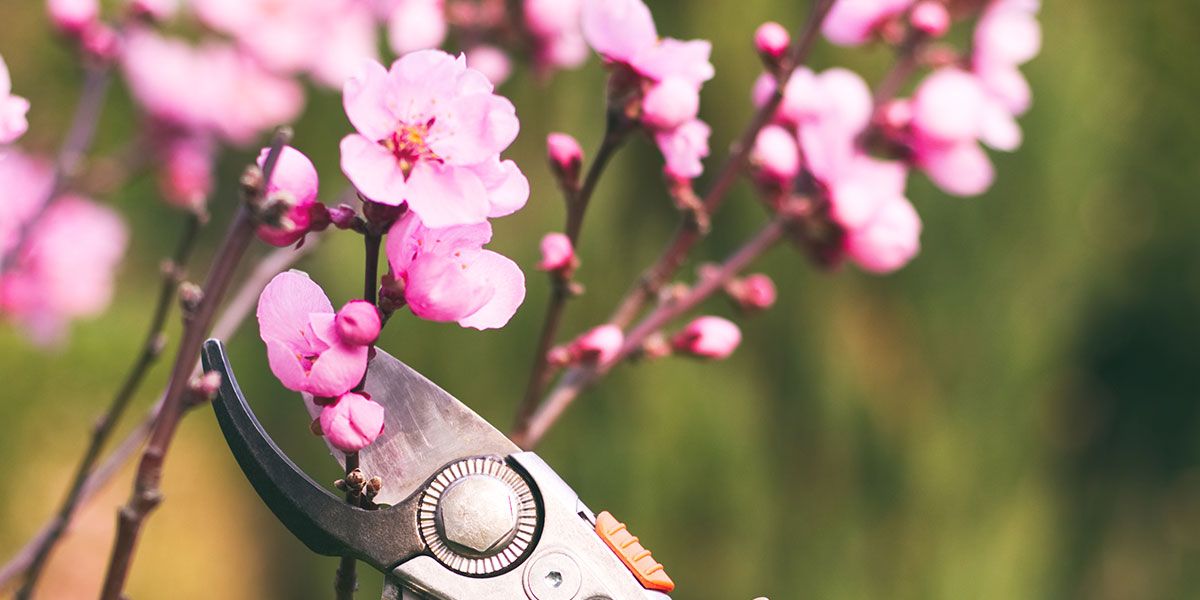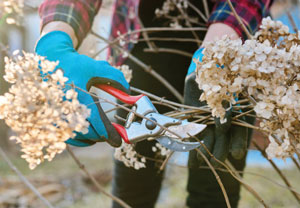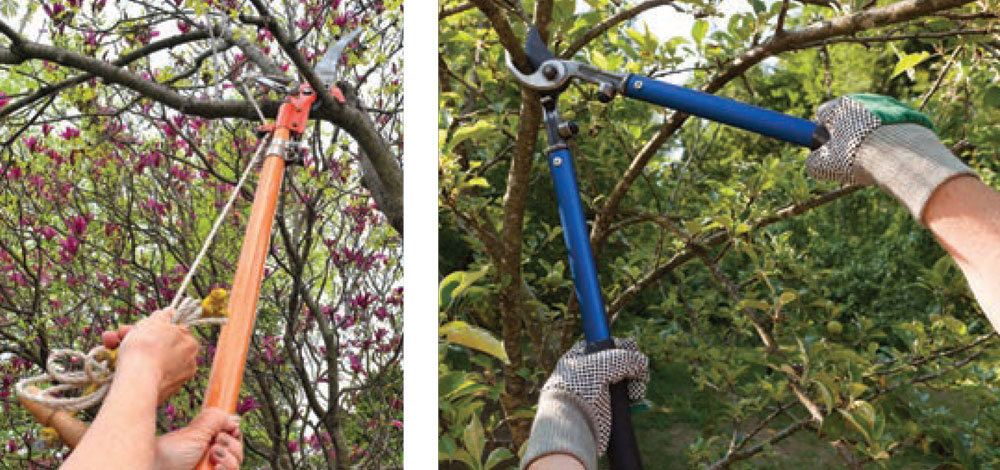Pruning | When and How to Cut Back Your Favorite Plant

Pruning and tree trimming is one of those landscaping tasks that, when done right, keeps plants healthy and productive. It improves their appearance, helps control their size and shape, can prevent property damage or personal injury, and influences fruiting and flowering. But done incorrectly, your plants can be damaged irreparably.
Generally speaking, the timing of pruning is determined by when the plant blooms. Most plants benefit from being pruned in late winter to early spring, although there are a few exceptions to that rule. Take azaleas for instance; as with most plants that bloom in late winter, spring and early summer, they prefer to be pruned just after blooming, making now (April into May) the perfect time to prune them.
 What about those plants that don’t bloom, like an evergreen or deciduous shrub? Those are also best pruned in spring. Pruning creates an open wound on the plant, so cutting it at the end of its dormant season means it will heal during the rapid growth spurt of the spring, leaving plenty of time for the plant to recover throughout the growing season. The perfect time to prune is while it’s still cool but after the danger of a hard frost has passed. It is easier and better to prune before things leaf out to better see the shape of the tree or shrub. Another reason to avoid pruning in this stage is because the plant’s energy is focused on producing leaves, making it more susceptible to damage. You can reasonably prune into warmer weather with evergreens, but keep in mind this risks encouraging new growth, which may not mature enough before colder temperatures and frost sets in again, causing damage to the plant.
What about those plants that don’t bloom, like an evergreen or deciduous shrub? Those are also best pruned in spring. Pruning creates an open wound on the plant, so cutting it at the end of its dormant season means it will heal during the rapid growth spurt of the spring, leaving plenty of time for the plant to recover throughout the growing season. The perfect time to prune is while it’s still cool but after the danger of a hard frost has passed. It is easier and better to prune before things leaf out to better see the shape of the tree or shrub. Another reason to avoid pruning in this stage is because the plant’s energy is focused on producing leaves, making it more susceptible to damage. You can reasonably prune into warmer weather with evergreens, but keep in mind this risks encouraging new growth, which may not mature enough before colder temperatures and frost sets in again, causing damage to the plant.
It is helpful to know if a plant blooms on old or new growth, as that can help determine when to prune as well. For plants that bloom on new growth, you’ll want to prune them immediately after their blooms fade. Azalea is a good example of this type of plant. If a shrub has been neglected, it may need a hardy pruning to rejuvenate regardless of when it blooms. The best time to tackle this is before it fully leafs out. You may lose a season of blossoms when you do this, but the healthier plant will make it worthwhile. Pruning beyond 30 percent of the plant in one season can have detrimental effects on a plant, so never get too chop-happy. Of course, the exception to this (because there seems to be an exception to every rule) is roses, particularly knockout roses, which like to be cut to a height of 12 inches so they can rebound with enthusiasm.
Of all the blooming shrubs in the garden, hydrangeas are perhaps the trickiest to know when to prune. Before cutting, you need to know if they bloom on old or new wood. Oakleaf, mountain, climbing and bigleaf hydrangeas bloom on old wood and should be pruned just after blooming. Smooth and panicle hydrangeas bloom on new wood, so they should be pruned in late winter or early spring. Plants that bloom on new wood do well with more aggressive pruning, while those that bloom on old wood usually only need it to keep their size and/or shape in check.
 There are several types of pruning cuts: thinning, reduction, and heading cuts, with each method giving a different result. Thinning cuts remove side branches which can reduce the weight on the main branches. Reduction cuts remove larger branches and are generally utilized in training younger trees. Heading cuts remove the growing tips of branches; this is the pruning we see primarily with flowering shrubs like azaleas. When setting out to prune a tree or shrub, take into consideration what the end goal is. Your local garden center or master gardener program can usually answer questions about pruning a particular plant, although some species may require a little more research.
There are several types of pruning cuts: thinning, reduction, and heading cuts, with each method giving a different result. Thinning cuts remove side branches which can reduce the weight on the main branches. Reduction cuts remove larger branches and are generally utilized in training younger trees. Heading cuts remove the growing tips of branches; this is the pruning we see primarily with flowering shrubs like azaleas. When setting out to prune a tree or shrub, take into consideration what the end goal is. Your local garden center or master gardener program can usually answer questions about pruning a particular plant, although some species may require a little more research.
Having the proper tools is important as well. Use a tool with a blade that will easily cut through the thickness of wood without crushing or damaging it. For anything under ¾ inch in diameter, a hand pruner should work well. Lopping shears, with longer handles, are designed to cut up to about 1 ¾ inches. Pole pruners can be used to reach branches up to 2 inches in diameter as far as 12 feet off the ground (exercise care when trimming around utility lines). Chain saws can be used for larger branches, with all the recommended safety gear. Hedge clippers can be used on thin-stemmed hedges.
No matter the tools, they should be properly maintained. Clean them after every use, taking care to disinfect them to discourage diseases from spreading. Rubbing alcohol, Lysol and Listerine are effective and don’t corrode metal like bleach or other heavy duty cleaners, such as Pine Sol, would; these should be avoided. Following the cleaning of your blades, dry and oil them to maintain them for years to come. Regular sharpening is also recommended.
Right now—April into early May—is the best time to prune for many plants, but many a gardener will admit to wandering around with clippers in hand every time they set foot in the garden, making adjustments here and there as they come across them. A lot of pruning isn’t necessary for the right plants being planted in the right location. Bear this in mind as you plan your garden. If you need a tall, narrow-growing plant, select one that does this naturally, rather than one which is known to have spreading branches. The right plant for the right spot will need very little maintenance and pruning over years, allowing you more time to enjoy it. ✦
azaleas, chain saws, deciduous shrub, evergreen, hand pruner, heading cuts, hedge clippers, hydrangeas, lopping shears, plant blooms, pole pruners, pruning, pruning cuts, reduction, roses, thinning







